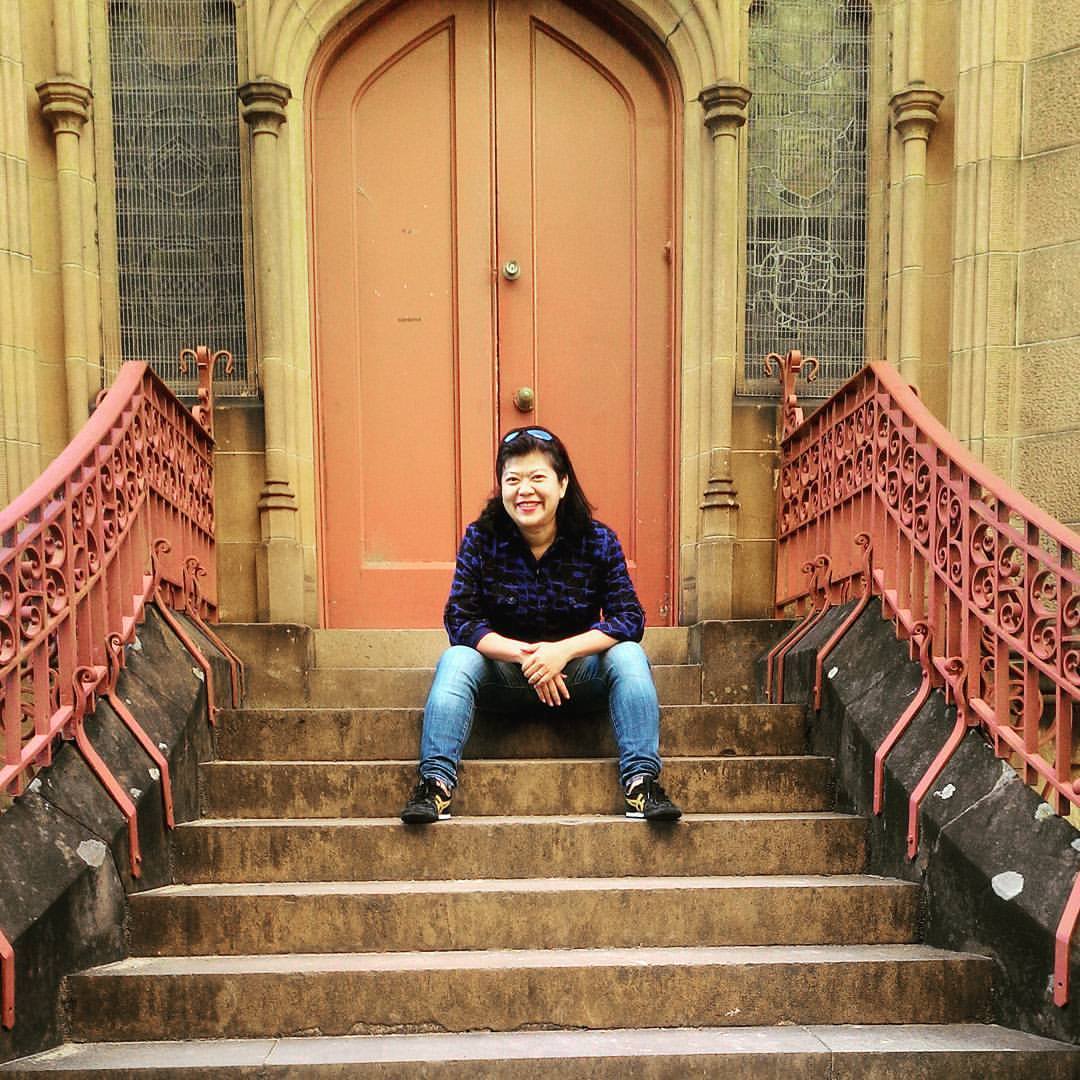|
Getting your Trinity Audio player ready…
|
Originally published in MEDIUM.
In the next 12 minutes, we’ll head off the beaten track and traverse from Georgetown to Tasmania, hop across to LA for a minute then boomerang back to Sydney to witness how multiculturalism is a winning card for a country to achieve greatness. That, is my not so humble opinion.
About 180,000 years ago, humans successfully migrated out of Africa. By about 50,000 years ago we were already beginning to diverge into distinct populations. Come to think of it, Australia truly isn’t a young country as its national anthem suggests. It’s a land that has been inhabitated for 60,000 years yet no treaty exists.
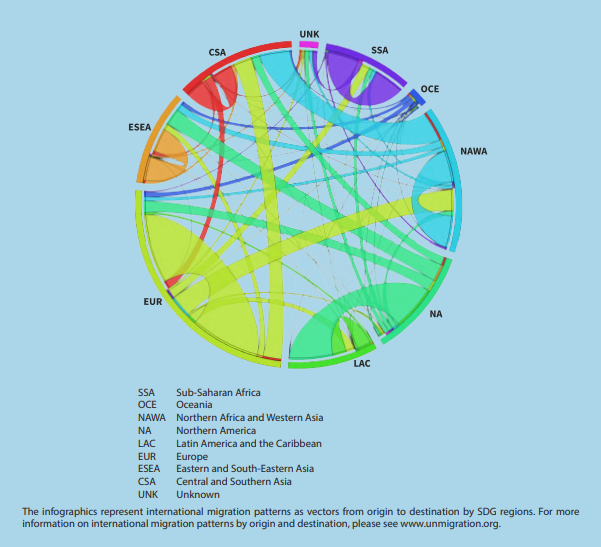
SOURCE: UNMIGRATION.ORG
Migration is a topic close to me as I’ve experienced it first-hand when my parents migrated to Australia in the 1980s. What was their drive at the time to bring the entire family to a country they had never been before? It wasn’t the call from streets paved with gold, that would have been 170 years ago when immigrants braved the seas to come to Australia for the Gold Rush in the 1850s. Or, could Australia have presented the closest Western country to Malaysia, a version of the West that offered a safe haven of hope, safe from the Sino-Malay May 13th incident? That, and it was this. In 1973 the Whitlam Labor government did away with the 1901 White Australia policy and replaced it by welcoming a multicultural mix of professional immigrants from over 200 countries.
Lest we forget
That other link was the presence of the Royal Australian Regiment in Malaya from 1955-1957 and 1961-1963 and Royal Australian Air Force base in Butterworth, Penang (1921-today) that may have formed an early familiarisation with Australia for mum and her sister, Aunty Nancy. I recall a story about my aunt sitting on the balcony at my grandfather’s house in Penang, waving to the armed forces driving past.

In April 1950, Australian Liberal Party’s Robert Menzies in his second term as PM sent the No. 38 Squadron RAAF to Singapore and two months later, Lincoln bombers of No.1 Squadron would be sent to Malaya at a time when North Korean communists were already invading South Korean borders. By 1954, when the hostilities had ceded in South Korea, Australia signed on and agreed to be a part of the British Commonwealth Far East Strategic Reserve (BCFESR) committing over 7,000 troops through the Malaya Emergency until 1960. Bless the ANZACS and may their memory be forever preserved for they were in their 20s. That was a long, significant time for all of the soldiers to spend in Malaya, protecting our yet to be emancipated nation at a time where most of our mums and dads would also have been at their prime 20-somethings. Perhaps it was that. Lest we forget.
I spoke to my aunt Nancy who migrated to Australia at a tender age of 17. I mentioned she was very brave for having dreams of studying abroad at the time. Aunt Nancy shared, “I don’t know about bravery. I feel blessed as I applied while I was in 4th Form n sat for my Entrance to AUS exams as set by the AUS Education Department Directions through AUS High Comm KL without telling anyone until I got accepted. Then the 1969 race riots in Malaysia when many Malaysians middle class and professionals, especially Malaysian Chinese and non-Malays felt the need to leave Malaysia. 1969 was my Form 5 year and my application was dropped to the bottom of a roomful to ceiling of application forms. I went to see family friend Uncle Koe Ewe Teik as he was ASEAN Soccer secretary and knew the Australian High Commissioner at the time. So my application was pulled out so I was able to start school on time and it was such a rush that I didn’t get to say goodbye to my school friends!” Suffice to say, Aunty Nancy met husband Tony in Tasmania and both completed their degrees; Tony in Chartered Accountancy and Nancy read Bachelor of Arts with double majors in Political Sociology and Administration, started a family and settled in Melbourne. They went on to contribute to Melbourne’s multicultural culinary diaspora by turning restaurateurs with Penang Hut (1978) and Singapore Hut (1983) and I’ve always known uncle Tony as my aunt’s Masterchef!
By 2017, 164,590 Malaysians had migrated to Australia, many of these baby boomers who sacrificed their comfortable lives in Malaysia and migrated down under for their children’s education and better career prospects. Some of them, descendents of migrants who had come to Malaya in the late 1800s to early 1900s from the southern provinces of China and south India crossing seas in search of greener pastures and working in British Malaya. Little did I know until writing this piece, that my beloved grand mother Maria Rose Khoo Chye Hong was only 3-years old when she lost her mother to the Singapore Fever (Spanish Flu) in 1919 as a new migrant to Georgetown, Penang.
In January 1919, the Spanish Flu had troubled Australia as soldiers returned from World War I. In just a year, more than 11,500 Australians succumbed to the flu and died. Sydney in its entirety was in quarantine. The Australian government as explained in this article, Soldiers Settlement Scheme saw some 37,500 take up the offer of funding and farm land in the Riverina district. Sadly only about half succeeded, as many of the returning soldiers had no prior farming experience. The Italian migrants on the other hand, flourished and used their experience from back home to work the land. While researching, I found this Italian documentary titled 88 days so enlightening as it shares stories from young Italian backpackers having a “hard” working holiday in Australian farms run by Italian Australians.
Back a century, the Spaniards must have copped it for the wretched post-war flu just like how now the Chinese are pin-pointed as coronavirus carriers in 2020. It goes without saying, whomever at the top, a superpower at any one time, will surely be the one fingers point to!
400 years back, trade between China and the USA was orchestrated by the Spanish Empire via a four-month Manila – Acapulco sail. Two Spanish Galleons would set sail annually from each port bringing jade, wax, gunpowder from southern China, spices from Indonesia and Malaysia in return for figs, sweet potato and labour! Today, there is a total of 50 million Han Chinese globally, the diaspora enriching so many Chinatowns globally.
LA exports Hollywood across seas!
The universal appeal of Hollywood and the appeal of the American Dream brought in a wave of people from all corners of the world.
America’s cultural export is one of modern human history’s most amazing feats I reckon; propelled by tonnes of popcorn and corn-syrup fizz supported by billions of production and marketing dollars, orchestrated by thousands of creative writers, producers and directors, their actors, singers and musicians for over 92 years creating so much of a buzz globally. All attention panned west towards Beverly Hills once a year during awards ceremonies.
A Chinese Bardot
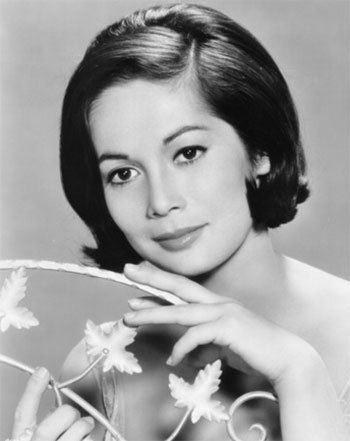
Hong Kong-born actress Nancy Kwan made her movie debut in the film The World of Suzie Wong (1960). That performance earned her a Golden Globe award and she became internationally renowned as an exotic and seductive female actress, the Chinese Bardot acting alongside William Holden.
“Take clothes off?”
“No, I never try nude”
“You should try”
Kwan’s next film, Flower Drum Song (1961) became the first major Hollywood film to have a majority Asian cast in a contemporary Asian-American story and it wasn’t until The Joy Luck Club (1993) that the feat was repeated.
Cousin Kevin Kwan would go on to produce the next new hit featuring Asian actors in Hollywood with Crazy Rich Asians (2018)
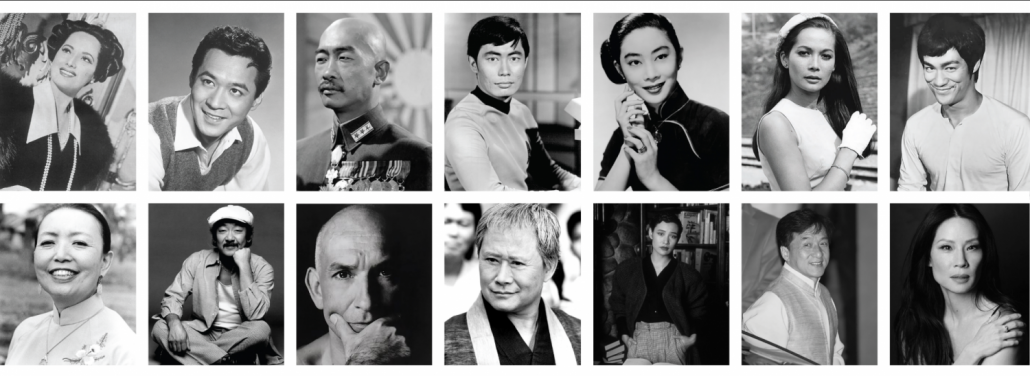
Ghosh, it’s getting hot in here!
Bishnu Charan Ghosh (1903-1970) is a yoga pioneer who has made yoga so popular, believed in bringing hatha yoga to the world yet he remained unknown to the Western world even after teaching at Columbia University, New York in 1939.
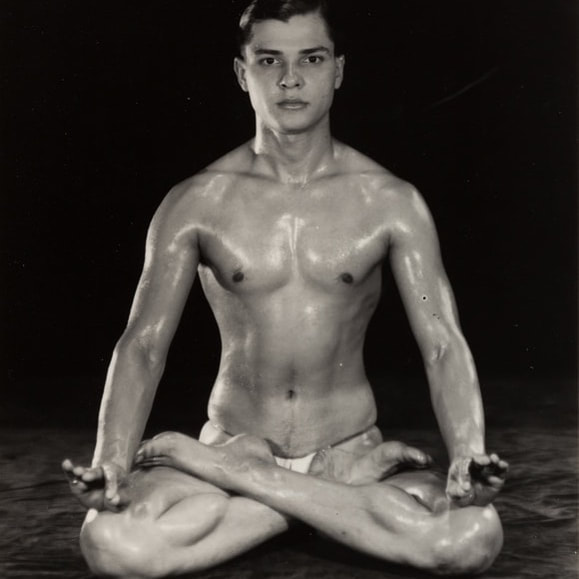
Guru Bishnu Ghosh, known as B. C. Ghosh, was a Bengali bodybuilder and Hathayogi, a practitioner of Hatha Yoga, a form of levitation and liberation via mastery in asanas (posture), pranayama (breathing), meditation and spiritual growth. He is the younger brother of world-famous Yogi Paramahansa Yogananda (1893-1952) whose book Autobiography of a Yogi (1946) sold over 4 million copies worldwide and became an introduction to Indian spirituality for personalities like Steve Jobs, Elvis Presley and the Beatles’ George Harrison among others. Guru Bishnu founded the College of Physical Education in Calcutta, India in 1923 and his writings influenced the development of modern yoga as exercise in India, which made its way to heat up hundreds of studios in Hollywood and the rest of the world.

Guru Bishnu’s brother Yogi Yogananda spent 32 years in America, settling in Los Angeles in 1925 and was called “the 20th century’s first superstar guru,” by the Los Angeles Times. He taught Kriya Yoga and setup the Self Realization Fellowship (SRF) which mushroomed to over 100 centres in India and the US.

I’m listening to a podcast about Bikram Choudhury (1944) the controversial founder of Bikram Yoga. In stark contradiction, a young Bikram made his way to Hawaii where he purportedly met President Nixon, hot yoga’d him and fixed his ailment to the extent an official Greencard was awarded to him, propelling him into the throes of Hollywood. He also claimed to have been an understudy of Guru Bishnu, but this has yet to be proven although Bikram’s methods are heavily influenced by Guru Bishnu’s teachings. His name was especially hot in December 2019 with the release of a Netflix original documentary on the Indian American yogi who has centres spread throughout the world still bearing the name, Bikram Yoga. It filed for brankruptcy in 2017.
Little is known about Bikram Choudhury today after the string of controversial #metoo like reports from teacher instructors, he has fled Tinseltown and is reportedly now teaching and hotting up Mexico.
The Indian Ministry of External Affairs reports a diaspora of over 28 million Indians residing outside of India, contributing to a growing awareness about Indian culture, food and spirituality and as a result, bringing people from all over the world to visit Southern Indian spiritual towns like Tiruvannamalai.
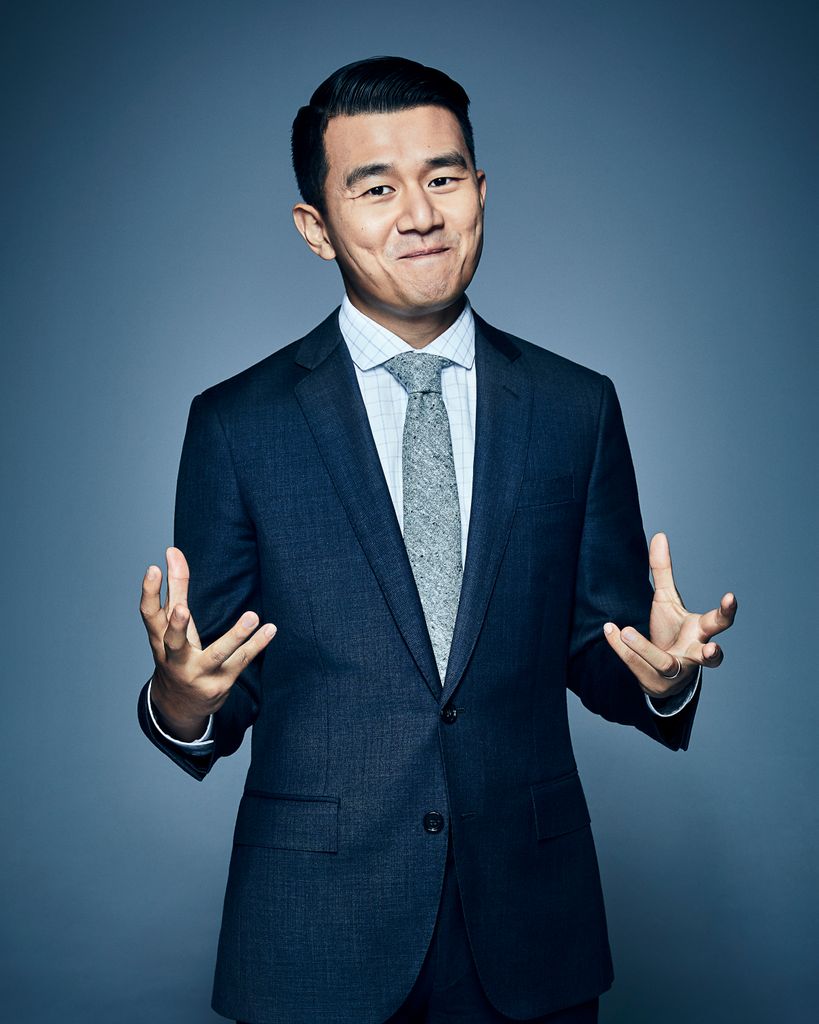
Ronnie Chieng
Trailblazer and Monash University’s most famous alumni cracks jokes about the differences between Asians and Western cultures with lots of WTFs thrown in-between conversations to rile up his third culture kid fans. And they’re loving it! Malaysian-born, Hampshire and Singapore schooled, Chieng completed his law degree studies and comedy kickstart in Australia, the man has arrived. Handpicked by The Daily Show’s Trevor Noah in 2015 as a Correspondent, he took chances by saying things that were “unacceptable” that turned out to be really funny and is now strutting streets of New York city as its latest new-age ‘immigrant’.
The internet is making us so stupid… who knew all of human knowledge would make people dumber?!
Ronnie Chieng
Watch Ronnie Chieng being interviewed by Hari Sreenivasan on Amanpour & Co. aired on December 17, 2019.
Awkwafina
While we’re on a Hollywood spree, a notable mention is rap artist and actor Nora Lum, also called Awkwafina who’s known for her role as Singaporean Peik Lin Goh in Crazy Rich Asians (2018) is a Golden Globe-award winning actress who’s starred beside Rihanna in Oceans 8 and . She’s the second Asian American woman to have hosted Saturday Night Live (SNL) and now even has her own show. Washington Post reports that Awkwafina was born to a Chinese American father and a South Korean immigrant mother who died when she was 4. She says it was her grandmother who really nurtured her to be funny and outgoing”.

Bong Joon-ho
South Korean Bong Joon-ho directed the first Korean movie to win Best International Feature Film and the first non-English film to win Best Picture at the Oscars this year. Parasite (2019) is not his first film. The Yonsei University Seoul graduate majored in sociology and was an active and vocal at student demonstrations, frequently subjected to tear gas early in his college years and bought his first video camera from selling doughnuts! “I still remember sleeping at night hugging the Hitachi camera,” Bong said. He co-founded a filmmaking club named Yellow Door, he made his first short films and shot wedding videos for a living. He is the second Asian director to win the Oscar for best director; after Taiwan’s Ang Lee, and is the first Korean director to win the Oscar for best director. [Ref: N.Y. Times, Jan. 2020]
“It’s fun for me to bury my political and social comments here and there in a film,” says Bong.
“In today’s capitalistic society there are ranks and castes that are invisible to the eye. We keep them disguised and out of sight and superficially look down on class hierarchies as a relic of the past, but the reality is that there are class lines that cannot be crossed. I think that this film (Parasite, 2019) depicts the inevitable cracks that appear when two classes brush up against each other in today’s increasingly polarised society”.
Multiculturally united
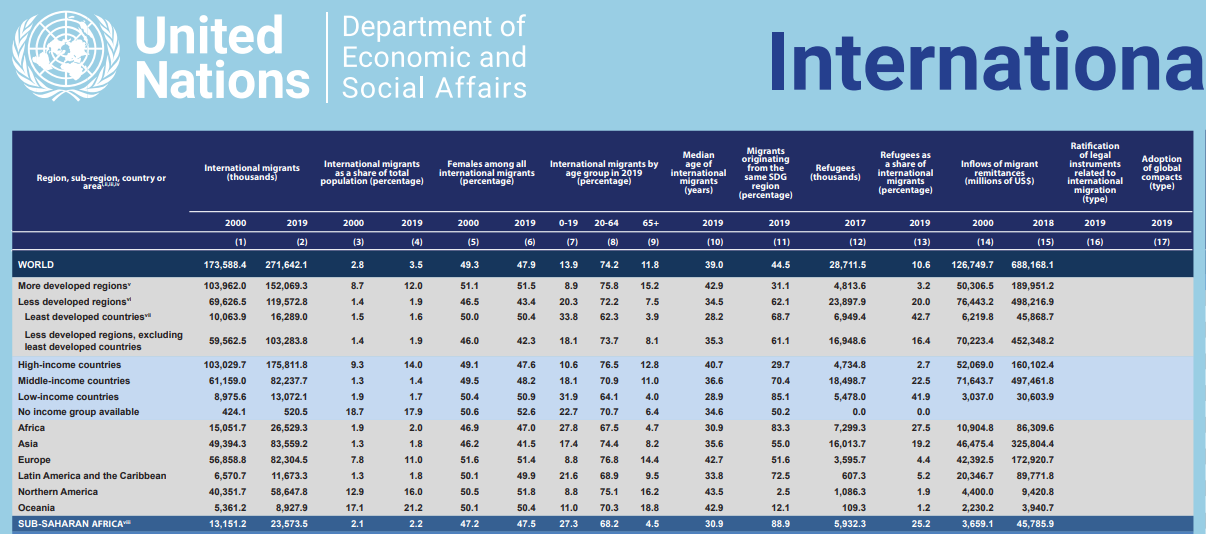
I’m observing a United Nations report to find that international migrants make up 15.4.% of the United State’s total population while one in three Australians (30%) are born overseas. Out of Australia’s 25 million population, Aboriginal and Torres Strait Islanders account for only 2.8% of the population (ANBS 2020).
Mother, I lay in your hands while you hold me my motherland
Holding my mother tongue close and reveries of my motherland closer, I’m a second generation Australian PR and fourth generation Malaysian where Malaysia and not China is my motherland. I arrived in Australia when it celebrated its bicentenary in 1988 as a teenage student and later at university, volunteered at the Aboriginal rights centre. I listened to understand and that experience anchored me as a new arrival to Australia, getting to know First Nations Gadigal people of the Eora nation where I now stand. I yearn to learn more of them, to be educated and to listen to their stories. How often do we listen to the First Nations people of any land we live in? What respect do we accord them if we’ve been a migrant for 30 years but not have a friend from the Motherland?
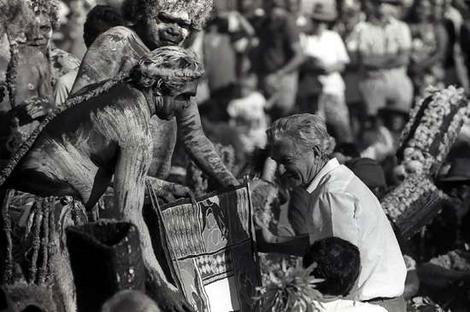
Source: Treaty Republic
In September 2019, newly proposed lyrics of Advance Australia Fair II was performed in front of a live audience at the Desert Song Festival in Alice Springs. Designed to facilitate reconciliation, Recognition in Anthem is a committee of Australians that hope the changes to the national anthem will become official and reflect that Australia is indeed not young and free but one and free with the added stanzas:
Australians all let us rejoice
For we are one and free
We’ve golden soil and wealth for toil
Our home is girt by sea
Our land abounds in nature’s gifts
Of beauty rich and rare
In history’s page, let every stage
Advance Australia Fair
In joyful strains then let us sing
Advance Australia Fair.
For 60,000 years and more
First peoples of this land
Sustained by Country,
Dreamtime told
By word and artist’s hand
Unite our cultures from afar
to peace with those first here
To walk together on this soil
Respect for all grows there
From everywhere on Earth we sing
Advance Australia Fair
In times of drought and flood and fire
When all but hope is gone
Australians join with helping hands
And wattle blooms again
Tomorrow may this timeless land
Live for our young to share
From red-rock heart to sun-drenched shore
Our country free and fair
Beneath the Southern Cross we sing,
Advance Australia Fair
Advance Australia Fair II – a Patriotic Song of Australia proposed by Recognition in Anthem.
I know I enrich the community where I live in, I pledge to cherish and to hold, in sickness and in health and if there’s one thing I could do for this civil partnership, is to support the lyrics for the Australian national anthem to accord the respect our First Nations people so rightly deserve and nestle by the bosom of a motherland so multiculturally diverse, it is the world at our feet.
References:
- http://www.migrationheritage.nsw.gov.au/exhibition/objectsthroughtime-history/50000-years-before-present/index.html
- https://australianstogether.org.au/discover/the-wound/the-lack-of-treaty/
- “Mother country.” Merriam-Webster.com Dictionary, Merriam-Webster, https://www.merriam-webster.com/dictionary/mother%20country.
- https://www.abc.net.au/news/2019-09-07/australian-anthem-rewritten-citizens-constitutional-recognition/11487540?utm_source=abc_news&utm_medium=content_shared&utm_content=link&utm_campaign=abc_news
